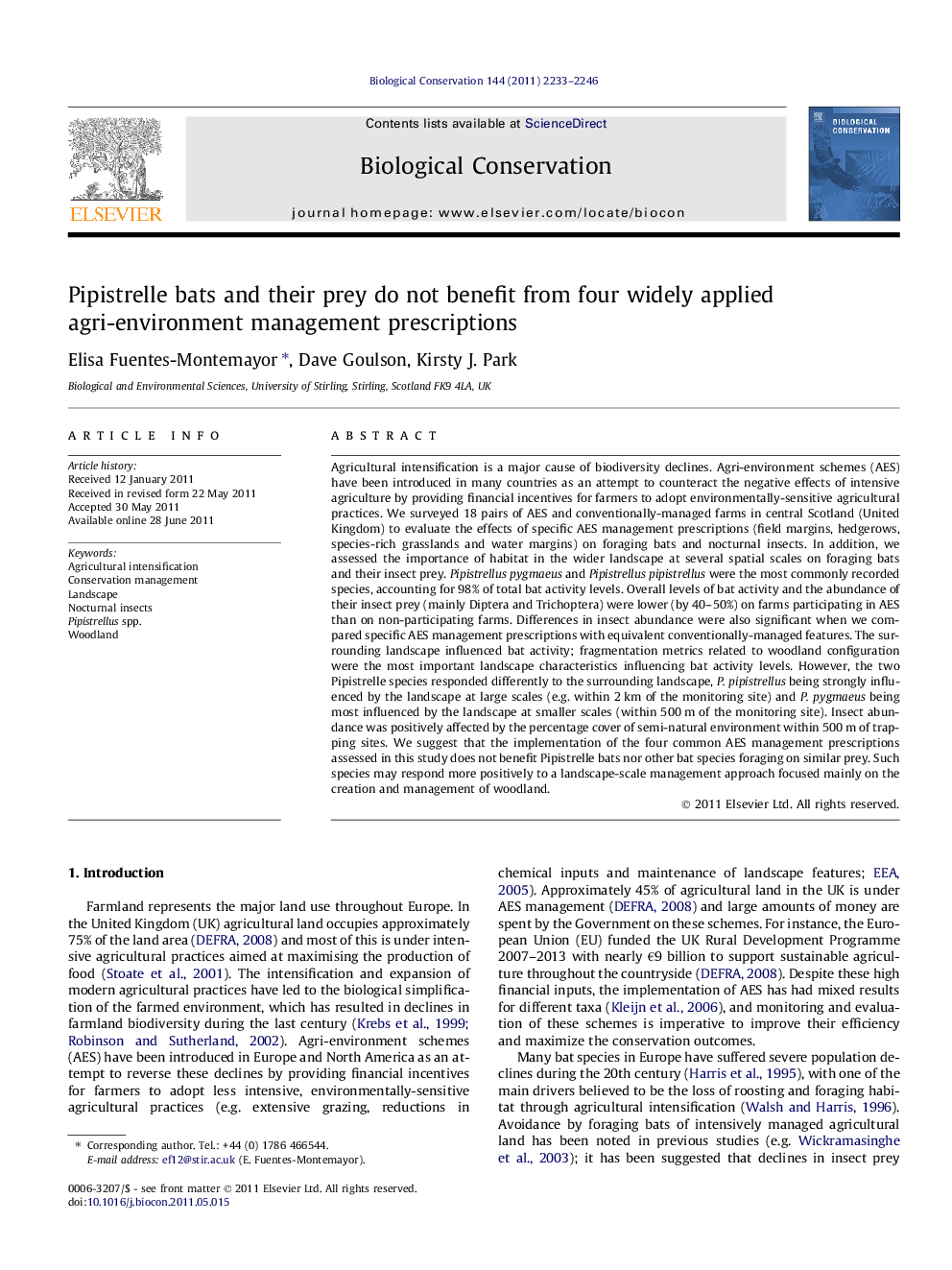| کد مقاله | کد نشریه | سال انتشار | مقاله انگلیسی | نسخه تمام متن |
|---|---|---|---|---|
| 4385544 | 1304541 | 2011 | 14 صفحه PDF | دانلود رایگان |

Agricultural intensification is a major cause of biodiversity declines. Agri-environment schemes (AES) have been introduced in many countries as an attempt to counteract the negative effects of intensive agriculture by providing financial incentives for farmers to adopt environmentally-sensitive agricultural practices. We surveyed 18 pairs of AES and conventionally-managed farms in central Scotland (United Kingdom) to evaluate the effects of specific AES management prescriptions (field margins, hedgerows, species-rich grasslands and water margins) on foraging bats and nocturnal insects. In addition, we assessed the importance of habitat in the wider landscape at several spatial scales on foraging bats and their insect prey. Pipistrellus pygmaeus and Pipistrellus pipistrellus were the most commonly recorded species, accounting for 98% of total bat activity levels. Overall levels of bat activity and the abundance of their insect prey (mainly Diptera and Trichoptera) were lower (by 40–50%) on farms participating in AES than on non-participating farms. Differences in insect abundance were also significant when we compared specific AES management prescriptions with equivalent conventionally-managed features. The surrounding landscape influenced bat activity; fragmentation metrics related to woodland configuration were the most important landscape characteristics influencing bat activity levels. However, the two Pipistrelle species responded differently to the surrounding landscape, P. pipistrellus being strongly influenced by the landscape at large scales (e.g. within 2 km of the monitoring site) and P. pygmaeus being most influenced by the landscape at smaller scales (within 500 m of the monitoring site). Insect abundance was positively affected by the percentage cover of semi-natural environment within 500 m of trapping sites. We suggest that the implementation of the four common AES management prescriptions assessed in this study does not benefit Pipistrelle bats nor other bat species foraging on similar prey. Such species may respond more positively to a landscape-scale management approach focused mainly on the creation and management of woodland.
► Bat activity and insect prey abundance were lower (by 40–50%) on farms participating in AES than on non-participating farms.
► Insect prey abundance was lower at specific AES management prescriptions than at equivalent conventionally-managed features.
► Fragmentation metrics related to woodland configuration in the wider landscape influenced bat activity levels.
► P. pipistrellus was influenced by woodland at larger spatial scales (within 2 km) than P. pygmaeus (within 500 m).
► Pipistrelle bats are likely to benefit from woodland creation and management at a landscape scale.
Journal: Biological Conservation - Volume 144, Issue 9, September 2011, Pages 2233–2246